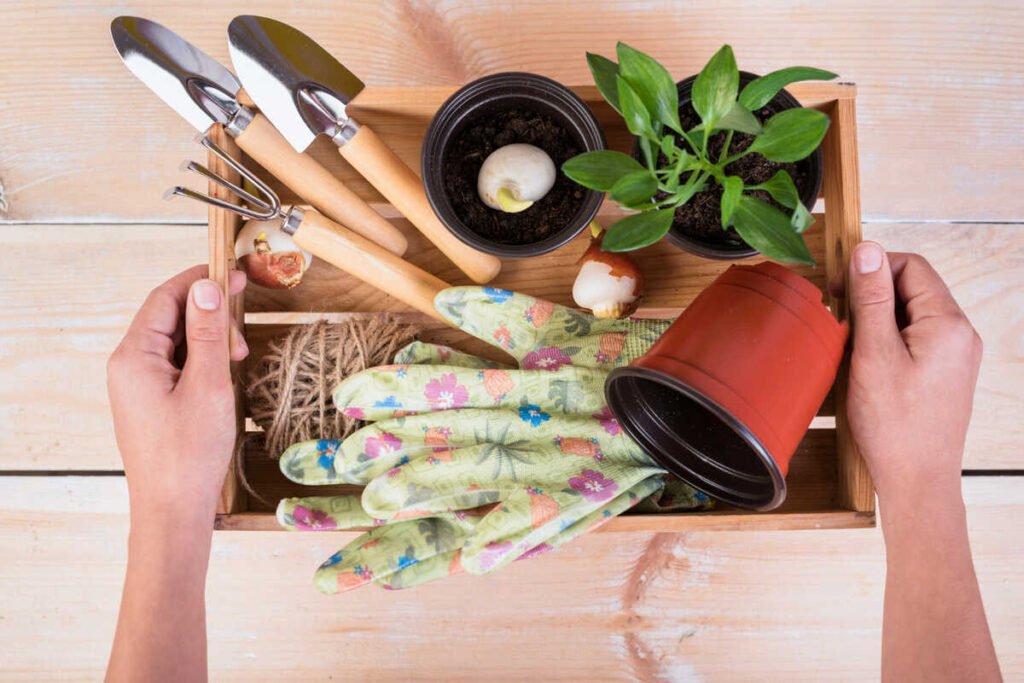Physical Address
304 North Cardinal St.
Dorchester Center, MA 02124
Physical Address
304 North Cardinal St.
Dorchester Center, MA 02124

Gardening is a rewarding and fulfilling activity, but without the right tools, it can quickly become frustrating. Whether you’re starting a home garden or simply looking to improve your existing toolkit, having the correct gardening tools can make all the difference. This guide will walk you through essential gardening tools, their uses, and tips for choosing the best ones for your needs.
Investing in the right gardening tools can enhance efficiency, reduce physical strain, and improve plant health. Poor-quality tools can lead to injuries, wasted money, and a lack of motivation to continue gardening. By selecting high-quality, appropriate tools, you ensure a more enjoyable and productive gardening experience. For a deeper understanding of how tools impact plant health, check out the expert advice from the Royal Horticultural Society.

A hand trowel is an essential tool for planting, digging small holes, and transplanting seedlings. When choosing a hand trowel, look for one with an ergonomic handle and a durable, rust-resistant blade. You can explore top-rated trowels recommended by the National Gardening Association.
Also known as secateurs, pruning shears help in cutting and trimming plants. These are crucial for maintaining the health of your plants by removing dead or overgrown branches. Opt for sharp, easy-to-grip shears that offer a comfortable cutting experience. For pruning techniques and tool maintenance, visit Fine Gardening.
Protecting your hands is crucial while gardening. A good pair of gloves should be durable, water-resistant, and flexible enough to allow easy movement. Gloves prevent blisters, scratches, and exposure to harmful pests and chemicals. You can find recommendations for the best gardening gloves on Gardeners’ World.
A garden fork is useful for aerating soil, breaking up compacted dirt, and mixing compost. Choose a sturdy fork with strong, rust-proof tines that can handle tough soil. Learn about different types of garden forks from The Spruce.
A spade is larger than a hand trowel and is perfect for digging, edging, and moving soil. Look for a spade with a solid, comfortable grip and a sharp edge for efficient digging. The BBC Gardeners’ World offers insights into selecting the best spade for your garden type.
Proper hydration is key for plant growth. A watering can is ideal for small gardens and potted plants, while a hose with an adjustable nozzle is better for larger areas. Choose a lightweight watering can with a long spout for controlled pouring. Learn more about efficient watering techniques from The Old Farmer’s Almanac.
A garden hoe is essential for weeding and shaping soil. Depending on your garden size and soil type, choose between a draw hoe (great for heavy soil) or a stirrup hoe (ideal for light weeding). The American Horticultural Society offers detailed insights into the best gardening hoes for different conditions.
A rake helps in clearing leaves, debris, and spreading mulch. A lightweight yet durable rake with adjustable tines can be a great option for versatility. You can explore the best-rated garden rakes on Home & Garden.
For those with larger gardens, a wheelbarrow or garden cart is essential for moving soil, compost, plants, and tools. Choose a model with sturdy wheels and a comfortable grip. Get expert buying advice from This Old House.

To extend the life of your tools:
Choosing the right gardening tools can transform your gardening experience, making it more efficient and enjoyable. By selecting high-quality, ergonomic, and practical tools, you can ensure a thriving garden while minimizing effort and strain. Start with the basics, maintain your tools properly, and enjoy the rewarding journey of gardening!